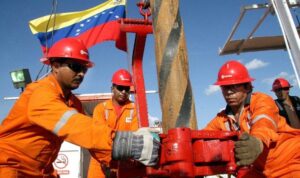
Published 04/11/2023 19:43
A day after Israel struck a convoy of ambulances transporting seriously injured patients from al-Shifa Hospital to the Rafah border crossing, the army intensified its bombardment of the Gaza Strip, hitting schools, mosques and more hospitals. If there were any qualms about trying to justify an attack on a hospital on the 17th, so as not to incur a war crime, Benjamin Netanyahu doubled down and showed how “defense rights” can occur from now on.
It is already known that the chances of condemning Netanyahu, his ministers and generals are distant, compared to what was done with Vladimir Putin, for much less. On the same day that the Palestinian Minister of Justice, Mohammed al-Shalaldeh, said that he will present the complaint to the International Criminal Court (ICC), the International Court of Justice stated that it will hold public hearings on the “legal consequences” of the practices of Israel in the Palestinian territories, but only at the beginning of next year, from February 19, 2024. Apparently, the ICC’s bet is that there will be no more Palestinian authority by then and the bureaucracy can be shelved.
At least 9,500 Palestinians have been killed since October 7, including 3,900 children. There are 24,158 injured and Israeli airstrikes also target paramedics and journalists. At least 46 journalists were killed, according to Gaza’s media office.
On Saturday morning, an Israeli aerial missile struck the al-Fakhoora school run by the United Nations Palestinian Refugee Agency (UNRWA) in the Jabalia refugee camp, killing at least 15 people and injuring 54, according to the Palestinian Ministry of Health.
Thousands of people displaced by Israeli bombings in the Gaza Strip have taken refuge in al-Fakhoora school. The attack on the school is the third major attack on the Jabalia camp.
A witness to the attack who lost family members in the attack told Aljazira that four people in his family were killed or injured. “We have nothing to do with anything related to the Hamas movement. The room only had children and women”, added the witness.
The attack came hours after a deadly attack on the Osama bin Zaid school, which housed displaced families in the al-Saftawi area north of Gaza City, killing at least 20 people, according to local media.
On Saturday morning, the entrance to al-Nasser Children’s Hospital in western Gaza City was also attacked and several local media outlets reported civilian casualties.
The Health Ministry spokesperson said that around 2,200 people, including 1,250 children, are currently buried under the rubble of destroyed buildings in Gaza.
Israeli forces also attacked power generators and solar panels at al-Wafa Hospital in Gaza City, according to local media.
An Anadolu Agency correspondent reported that the bombing resulted in a significant fire in the hospital courtyard, which was eventually brought under control by civil defense teams after several hours.
The attack on the hospital comes a day after the army attacked the entrance to al-Shifa Hospital and the areas surrounding al-Quds Hospital and the Indonesian Hospital.
According to journalist Hani Mahmoud, from Khan Younis, in southern Gaza, Israeli airstrikes also hit homes with solar panels.
“This seems to be the final nail in the coffin,” he told Aljazira. “What the Israeli army wants people to do is leave. The last source keeping them in Gaza was the small amount of electricity they got from solar panels,” he said.
Meanwhile, a water tank in eastern Rafah was also destroyed. “It seems to be another way of telling people, ‘We’re going to bomb everything you depend on for your survival,’” he added.
Gaza-based Al-Aqsa TV reported that the public water tank was used to supply water to several neighborhoods.
Separately, an Anadolu correspondent reported that the Israeli army bombed two mosques – the Ali bin Abi Talib Mosque and the Al-Istijabah Mosque – in the al-Sabra neighborhood, also in southern Gaza.
Debates in the Israeli media point to phase two of operations starting next week, with tactical ground operations inside Gaza. To achieve this, the intention is for all civilians to leave for the south, as they are deprived of means of survival in the north.
The contradiction of this is the numerous reported bombings in the south, which leave bodies of civilians strewn across the roads, trying to seek safety. The lack of a humanitarian corridor makes people reluctant to leave the north. On the other hand, the tactic also presupposes a considerable number of civilian losses to convince the evacuation.
Gaza’s two main roads – The Salah al-Din Road and the al-Rashid Coastal Road are the main north-south routes that run for 41 km towards Rafah.

The Israeli army said residents of the northern Gaza Strip will be allowed to use Salah al-Din Street, Gaza’s main road, to evacuate south between 11am GMT and 2pm GMT on Saturday.
But according to commentators, Israel has a history of breaking promises in wars.
“What are the guarantees that Israel will still not bomb while fleeing south? There are no international guarantors like the UN to monitor and guarantee that people will not be attacked,” said Tamer Qarmout, assistant professor of public policy at the Doha Graduate Institute. “Let’s say the Red Cross receives this mandate. Then people will be safe and feel safe.”
Palestinian authorities point out the numbers of the confrontation in their territory:
- 27 ambulances were destroyed.
- 105 medical facilities suffered damage as a result of airstrikes or bombings.
- Israeli forces also attacked and destroyed three Palestinian university facilities.
- More than 8,500 residential buildings were destroyed.
- Around 220,000 residential units were completely destroyed.
- Another 40,000 residential units are partially destroyed and uninhabitable.
- 220 school buildings were attacked, 60 are out of service as a result of “direct attack”.
- 88 government buildings were completely destroyed.
- 55 mosques and three churches were completely destroyed.
From Aljazira with news agencies
Source: vermelho.org.br

